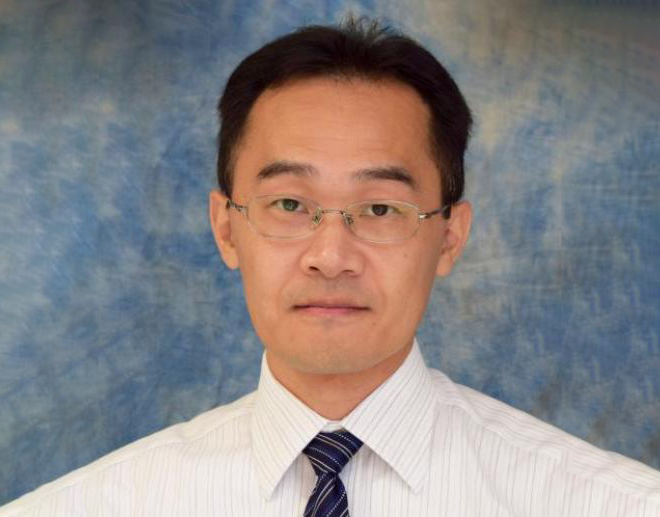Round 11: 2022-2023 Pilot Projects
 Defining the Roles of Fibulin-5 in Pulmonary Fibrosis
Defining the Roles of Fibulin-5 in Pulmonary Fibrosis
Pulmonary fibrosis affects thousands of people in Louisiana, and significantly contributes to their morbidity and mortality. There is an urgent need for effective therapies. This proposal aims to understand how fibulin-5, a matricellular protein, contributes to pulmonary fibrosis. Based on our preliminary data, we hypothesized that fibulin-5 functions as a fibroblast pro-survival factor during pulmonary fibrosis, and fibulin-5 depletion will accelerate fibrosis resolution by inducing fibroblast apoptosis.
To test these hypotheses, we will 1) determine the contribution of fibulin-5 to mechano-physiological and biochemical properties in fibrotic lungs, by comparing the lung function and extracellular matrix protein distribution map of fibulin-5 wild-type and knockout mice treated with bleomycin (a fibrogenic agent), and 2) define the mechanisms by which fibulin-5 deficiency promotes apoptosis in lung fibroblasts, using state-of-the art methods.
This research will give us novel insights into pathobiology of fibrosis and pave the way for new therapeutic targets in pulmonary fibrosis.
 Monitoring and targeting CD73 for gastrointestinal neuroendocrine neoplasms
Monitoring and targeting CD73 for gastrointestinal neuroendocrine neoplasms
The specific theme of this project is to advance treatment options for rare neuroendocrine cancers (NET) within Louisiana by quantitating expression and activity of the cancer related enzyme ecto-5’nucleotidase in NETs and NET patients. The long-term goal is to increase the overall survival of patients with rare cancers in Louisiana. NETs are a group of rare cancers (» 6/100,000) originating from neuroendocrine cells within multiple organs.
This proposal focuses on aberrant biological pathways in NET tumors that overlap with better studied and more prevalent cancers. Using metabolomic profiling, tissue and liquid biopsies, and cross-referencing ongoing clinical trials, we identified the enzyme ecto-5′-nucleotidase (CD73) as a potential new target for NET. CD73 is known to play an important role in cancer and small-molecule CD73 inhibitors are presently in stage II clinical trials. [3] Our hypothesis is that CD73 is a potential target in a subset of NET patients, and that stratification of patients based on CD73 expression or validated biomarkers will advance future clinical trials and benefit patients in Louisiana.
 Role of hydrogen sulfide in the glioma immune microenvironment
Role of hydrogen sulfide in the glioma immune microenvironment
Glioma is the most common primary brain tumor. Aggressive high-grade gliomas arise from degeneration of indolent low-grade gliomas. Immunosuppressive tumor-associated macrophages and microglia (TAMs) directly contribute to malignant transformation of low-grade gliomas by inhibiting anti-tumor immunity and promoting angiogenesis. Interestingly, my preliminary data suggests that hydrogen sulfide, a gasotransmitter, decreases TAM accumulation in gliomas. Specifically, levels of cystathionine beta synthase (CBS), the predominant hydrogen sulfide generator in the brain, were inversely correlated with survival and TAM markers in human glioma samples. The current proposal therefore seeks to validate hydrogen sulfide as a therapeutic target to reverse TAM-mediated immunosuppression in gliomas. In Aim 1, I will directly measure hydrogen sulfide from fresh surgical samples and correlate with alterations in TAM phenotype. In Aim 2, I will functionally characterize CBS overexpression in an immunocompetent mouse model of glioma.
 Defining the role of hepatic SLC25a25 on NASH development
Defining the role of hepatic SLC25a25 on NASH development
The prevalence of non-alcoholic fatty liver disease (NAFLD) is rapidly increasing and impacts 25% of the global population. Non-alcoholic steatohepatitis (NASH) is the fastest growing cause of cirrhosis and liver cancers, but there are no targeted therapies to date. Thus, there is a critical need to investigate the molecular mechanisms of NASH to develop effective treatments. Mitochondria are the primary organelles involved in hepatic substrate oxidation and energy production. Mitochondrial protein SLC25a25 is a critical regulator of ATP availability and rates of mitochondrial oxidation. We are aiming to identify the role of SLC25a25 in the NASH development by 1. analyzing liver expression of SLC25a25 in patients with NAFLD, 2. employing mice with liver specific loss of SLC25a25 for mechanistic studies. The findings of this proposal have the potential to provide the conceptual framework for the development of targeted pharmacotherapies for NASH, which can impact outcomes for patients with liver disease.
 Response and role of Bone marrow-derived Hematopoietic Stem Cells (BMHSCs) to Chronic
liver injury
Response and role of Bone marrow-derived Hematopoietic Stem Cells (BMHSCs) to Chronic
liver injury
Chronic liver disease (CLD) is major cause of illness and death worldwide. Among Louisianans, CLD is on the rise primarily because of low socioeconomic status, hepatitis infection, obesity, and metabolic syndrome. Unfortunately, there is no available therapeutic to treat failing livers due to intractable hepatocyte loss. CLD cannot be effectively treated with liver transplantation due to a severe shortage of organs and complicated surgery. Bone marrow (BM)-derived hematopoietic stem cell (BMHSC) transfusion therapy may be an effective, safe, and viable option for restoring liver function and increasing hepatocyte count. A lack of understanding of 1) how BM cells respond to liver injury, and 2) how BMHSCs stimulate the regeneration of functional hepatocytes hinders BMHSC therapy for CLD. This study will provide a strong scientific basis for using BMHSCs as a treatment for CLD by filling these knowledge gaps.
